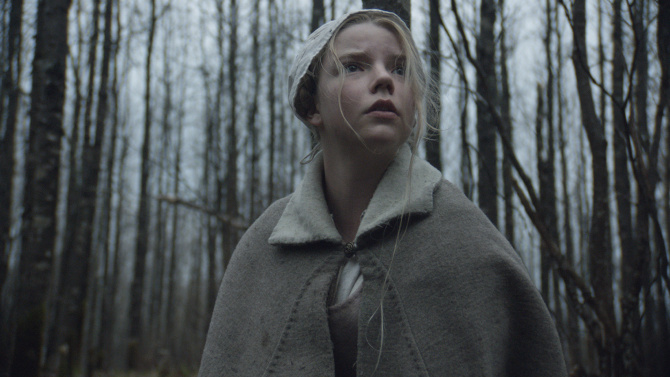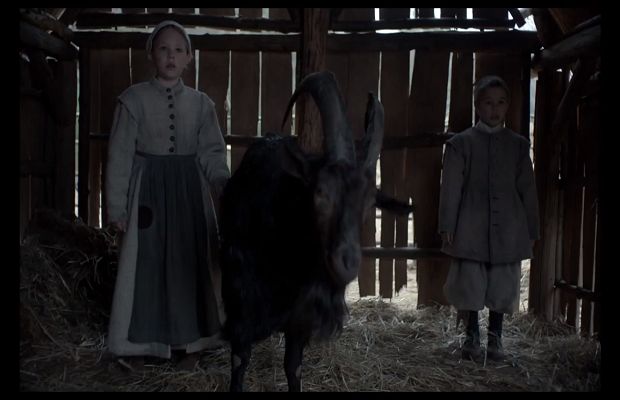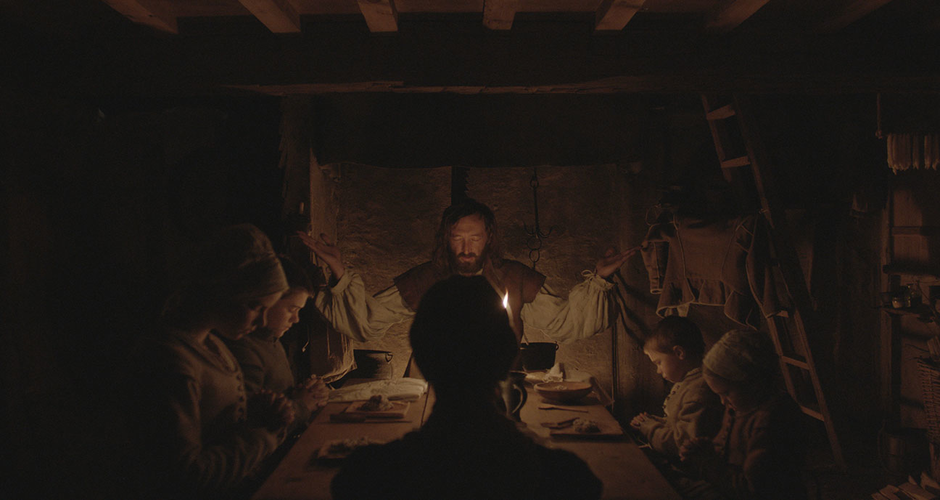It doesn’t take long for The Witch to make a lasting impression. We meet the title character very early on. She’s hidden in shadows, obscured by branches, and in the midst of doing something unspeakable. Her actions are further obscured by the awful sounds made by her walking stick and her rapid, shallow breathing. Writer-director Robert Eggers and cinematographer Jarin Blaschke make full use of the setting, sound design, score, and lighting to create some of the most haunting images I’ve ever seen on a movie screen. And they do this within the film’s first ten minutes. It’s not only a sign of sure hands behind the camera but an explicit warning that, to put it simply, we ain’t seen nothing yet.
Like the best horror films, The Witch is in the business of dread, not jump scares and gore. It’s a movie that never lets the viewer feel safe. We’re uneasy nearly every second and yet can’t take our eyes of the screen when horrible things inevitably occur. This is because Eggers pulls us into this strange world with confidence and finesse. There’s not a detail that feels out of place. People who claimed The Revenant made them feel like they were living in the frontier era had better hightail it to this movie. Not only is it more fully realized, engaging, and harrowing, it also places you directly into New England in the 1630’s and makes the trials of Hugh Glass look positively peachy by comparison.

The film opens in an unmanned puritanical town where a family of six is on trial for seemingly being too rigid in their interpretation of religion. This is our first clue that not all is well with this family. When one of the most strict and oppressive societies in the world kicks a group out for being too strict and oppressive, you just know those folks are a couple wheels short of a carriage. The family heads out on their own and settles on a small farm surrounded by woods. The father (Ralph Ineson) is protective, fanatical, and overbearing but not altogether a bad man. The mother (Katie Dickie) seems more unhinged but is also clearly overwhelmed by her new circumstances, not to mention her new baby. The eldest daughter (Anya Taylor-Joy) struggles to maintain a happy demeanor as her brother (Harvey Scrimshaw) becomes increasingly unnerved by their surroundings. Then there’s the young twins (Elle Grainger and Lucas Dawson) who spend nearly all of their time playing with a creepy goat they’ve named Black Phillip.
To say any more about the plot would be to give the whole game away. Obviously, a witch is involved and as the bizarre happenings at the farm increase, so does the paranoia. After all, this is set in a time not long before the Salem Witch Trials. One need to simply have been a woman with an idea of her own in her head to be called a worshipper of Satan. It’s not long before each family member is accusing another of witchcraft. Their accusations are brought on not by traditional ideas about witches but by the extreme paranoia that comes from being isolated. Cut off from the rest of society, surrounded by ominous woods, it’s far easier to blame the person sitting right next to you than a monster out of fairy tales.

Religion has an important role to play as well. The father is a true believer, a man who knows that all his children were born in sin and is loathe to even suggest that God loves them. Only through extreme devotion will they be saved. You see the danger of his staunch assertions spread throughout the whole family as each character begins to question exactly how good of a man he truly is. He keeps secrets of his own that he defends without regard for the hypocrisy they convey. All actors in the film are strong but Ineson is by far the standout as this troubled man. A recognizable character actor with a resonant voice (he played Chris Finch in the original The Office), he steps fully into the limelight here and should become a household name after this. He gives a rich, nuanced performance that allows us to both sympathize with despise him, often in the same moment.
Then there’s the goat. I must admit the trailer had me a bit worried that the animal would come off as goofy rather than intimidating. In order to avoid that, Eggers wisely has it behave more or less like a goat, leaving us to question whether or not it’s really whispering not-so-sweet nothings to the younger children or if it’s simply their imagination run amok. Whatever the case may be, and like so much else in the movie, Black Phillip leaves a lasting impression. If I ever visit a petting zoo and see a black goat, I’ll regard it with more than a little trepidation.

I’d like to discuss the film in more detail–and perhaps I will in a spoiler filled post–but this is something you need to see for yourself. Be aware that Eggers consulted manuscripts and actual records in order to create dialogue that sounded authentic for the time period. This gives the film a poetic quality and an otherworldly vibe that only serves to put us more on edge. Makes it feel like an actual piece of folklore, which was clearly the goal he had in mind. I also appreciate how he makes witches scary again while acknowledging the violence visited upon countless innocent women accused of witchcraft. But most of all, I admire the images he creates and feeling of dread he evokes. There are sequences in this film that I will be struggling to get out of my head for the rest of my life. That may sound like a criticism but it’s quite the opposite. All great horror films follow you home and haunt you for years to come, conjuring up images and scenarios out of your subconscious that you thought were long buried by years of other movies. The best horror films cut through all of that to remind you that fear is the most palpable emotion and one that you need in order to stay alert and awake. The Witch will keep you awake for a very long time.


GET CHOMPED